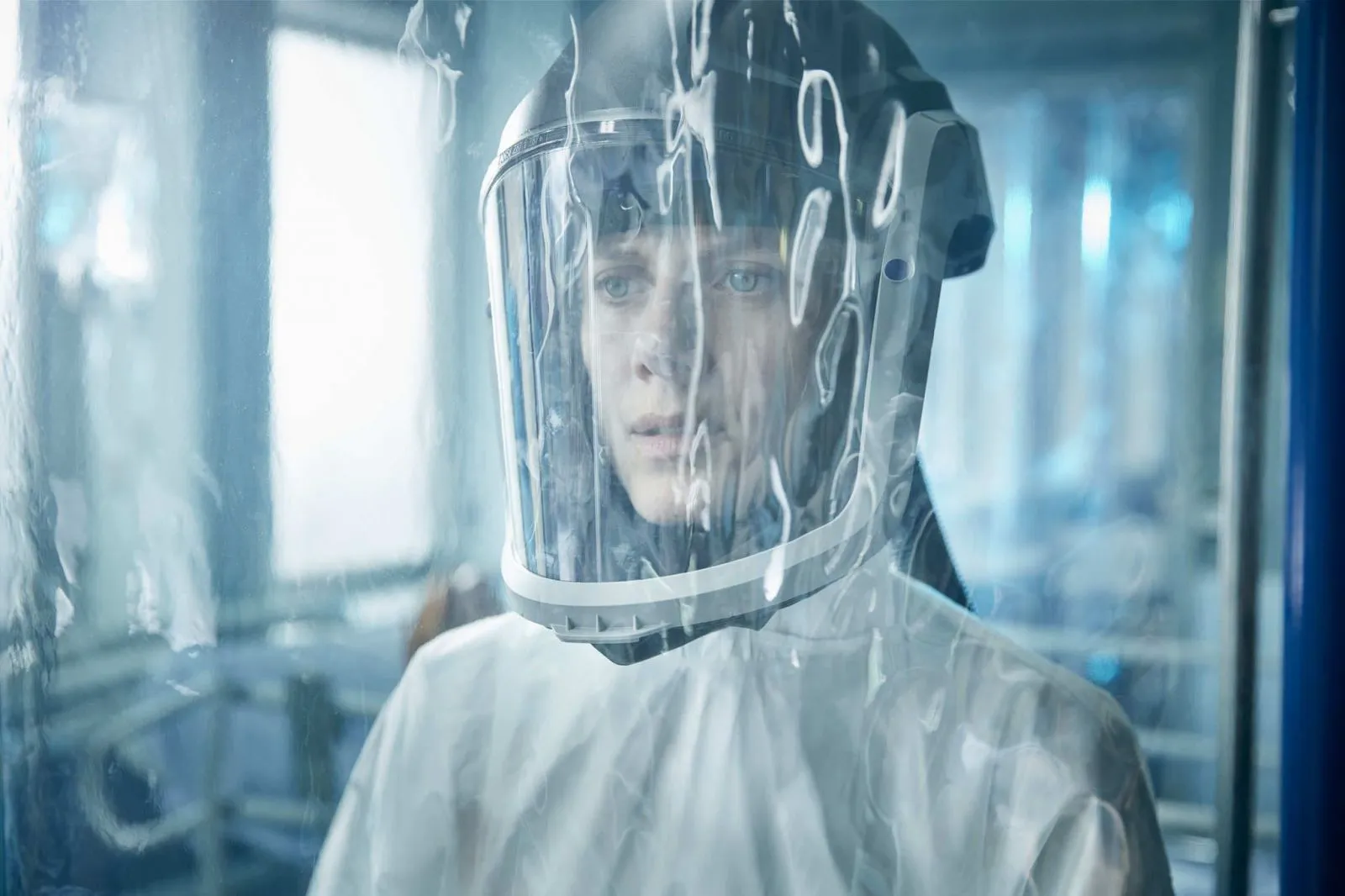Oxygen: A Claustrophobic Thriller with a Breath of Fresh Air
A tightly sealed genre hybrid about survival techniques in a cryogenic chamber with a remarkable Mélanie Laurent in the lead (and almost only) role.
Oxygen Level: 35%
The film opens like one of those escape room challenges that were all the rage a few years ago: a woman (Mélanie Laurent), swathed in wires and IV drips, wakes up in a cryogenic chamber. She can’t remember how she got locked in this confined space, or even her name or face. She doesn’t have much time to figure it out: the oxygen level is inexorably dropping, as she’s informed by the voice assistant M.I.L.O. (Mathieu Amalric), who becomes her interlocutor and guide on the path to salvation. The artificial intelligence has a rather uncooperative and sometimes overly sarcastic disposition. Their dialogue turns into Omicron 267’s (as M.I.L.O. calls her) sometimes futile attempts to ask the right questions, like search queries on Google—the computer is in no hurry to reveal everything it knows, prevaricating and doling out information in small doses.
Mélanie Laurent as Elizabeth Hansen in a still from “Oxygen”
Claustrophobia and Genre Bending
Oxygen Level: 22%
In his previous film, “Crawl,” genre master Alexandre Aja (“The Hills Have Eyes,” “Horns,” “Mirrors”) compressed the space to a basement teeming with alligators, and reduced the cast to a father, daughter, and dog confronting the reptiles. A few years later, Aja decided to completely eliminate excess air from the frame: the architecture of “Oxygen” is squeezed to the maximum, and besides M.I.L.O., Laurent’s character hears only a couple of other voices. Gradually, in meditative and contemplative flashbacks, fragments of memory reveal her husband (or so it seems—played by Malik Zidi) and mother.
Mélanie Laurent as Elizabeth Hansen in a still from “Oxygen”
Besides “Buried,” which shares a similar striking concept, Rosanne Liang’s recent “Shadow in the Cloud” also comes to mind—for most of the wild action film, Chloë Grace Moretz was alone with the viewer, locked in a gunner’s turret. But this seemingly authorial stinginess did not affect the springiness of the genre’s nerve or the economy of expressive means. All of the above is true for “Oxygen,” coupled with the remarkable skill of French actress Mélanie Laurent (the one Christoph Waltz shouted “Au revoir, Shoshanna!” to in Tarantino’s “Inglourious Basterds”). An inaccurate casting choice could have buried the film in the first few minutes, but Mélanie is hypnotically convincing in her solo performance.
Pandemic Reflections and Romantic Echoes
The chosen method (and, likely, to some extent the plot itself) is dictated by the circumstances of the film’s creation—it was shot in 2020 between lockdowns in France. The pandemic reality intrudes on the screen not only as a possible starting point—a terrible virus roams the earth—but also through painful isolation and loneliness, where the closest person is not a person at all, but a voice assistant. Today, “Oxygen” feels like a kind of COVID postscript, with its increasing anxiety, mental disorders, and longing for how things used to be (remembering that “before” becomes increasingly difficult).

Mélanie Laurent as Elizabeth Hansen in a still from “Oxygen”
Oxygen Level: 17%
In just over an hour and a half, “Oxygen” develops its own hybrid genre formula: it’s a detective story with chaotic leaps toward the horizons of a solution, and science fiction—a cryogenic chamber with a multitude of sensors, the didactic voice of M.I.L.O., and the fluorescent glow of the instrument panel’s blue light. Aja couldn’t do without his native horror vocabulary either: there will be rats, screams, threatening syringes, and other jump scares hitting the nerve cells in the midst of an already tense action. All these diverse maneuvers surprisingly easily and harmoniously come together in the overall rhythm of the film, but even more striking is that they remain only a means and a way to convey an amazing, bizarre, and heartbreaking love story. Any extra word about the plot threatens to rupture the cocoon of a well-packaged intrigue, so just try to take our word for it: “Oxygen” is one of the most romantic and sensual films of the COVID era. But with approaching pathos, Aja manages to precisely balance the edges of his fiction, not sliding into a valley of pretentious sentimentality or drowning in an avalanche of burning tears. It is a capacious reflection on the transformation of an eternal feeling in the face of a fragile and changeable reality.
A Test of Empathy (Spoiler Alert!)
Oxygen Level Critical: 2%
Here we will leave a postscript for those who have already seen the film and are not afraid of spoilers (we strongly recommend that everyone else close the text). In Ridley Scott’s indestructible classic “Blade Runner,” there was the so-called Voight-Kampff test (a modified Turing test) to identify replicants by their strength of empathy. If debates about the nature of Rick Deckard’s humanity are still ongoing and contrary, Aja is unambiguous in his conclusions, although his reflection tends more towards the laws of memory organization than the nature of humanity. “Oxygen” becomes a kind of test for the viewer (as “Blade Runner” itself was in a sense): will the viewer have enough of that very strength of empathy to sympathize with Omicron 267, or will the main plot twist extinguish the rising flame of tension? Is the ending a tragedy for those left on Earth, or a new hope for the future of those who embarked on a space odyssey? There are unlikely to be universal answers, but Alexandre Aja is probably much more interested in articulating the questions themselves.